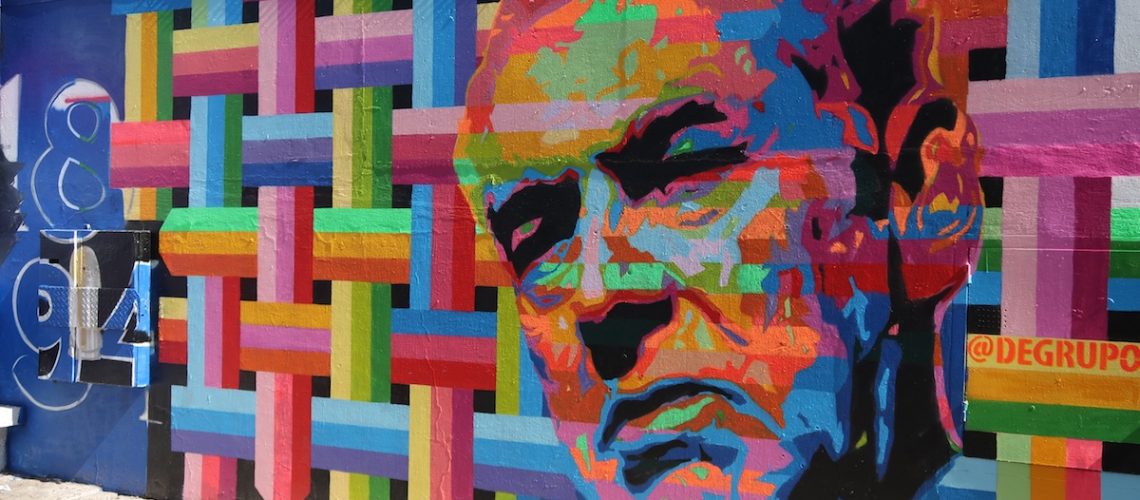A couple of days before we left Melbourne I woke up during the night trying to get my head around what would happen when we crossed the International Date Line. I wondered if I’d actually booked our Santiago hostel for the right day! I had, but it still cost me a few brain cells trying to work it all out.
It is a long flight, around twelve hours in the air. I still can’t work out the exact details, but the result of the trip was that we left Melbourne at around thirty minutes past midday and arrived in Santiago at about the same time we’d left. About midday. On the same day. Except that when we started we were nine hours ahead of British Summertime. When we landed we were five hours behind it.
It’s certainly the biggest time difference I’d experienced on a flight and I was expecting to suffer some fairly serious jet lag.
As has been the case at the majority of the airports we’ve landed at so far, clearing immigration was pretty painless. Either eating or throwing away any kind of fruit, vegetable or organic products seems to have been mandatory at most airports since we hit South East Asia. This was no exception. So, out of the airport and into the waiting taxi we get our first glimpse of South America and Chile.
Our hostel, the Poker Hostal, is in an area of Santiago called Lastarria. Pretty central and close to the river, museums and the Plaza de Armas, the main square. To get to Lastarria meant travelling down one of the main arterial roads into the city. Admittedly it was a Sunday, but throughout almost all the journey, we passed shuttered buildings. Shabby and grubby, and covered with graffiti.
Graffiti, street art? Street art, graffiti?
I’m not sure where the boundary lies between the two. Is it the quality of the ‘art’ itself or does it have to make some kind of statement (political or otherwise)? Whichever, Santiago and surrounding areas are famed for their street art, and without doubt it is never very far away.
In truth we didn’t see much more on our trip into town, the Poker Hostal was not far off the main road. Down a couple of quiet side streets and we were there.
Our strategy to counter act the jet lag was to have a short nap in the afternoon, then get up and explore the nearby streets. Lastarria was supposed to be a vibrant area, flush with bars and restaurants.
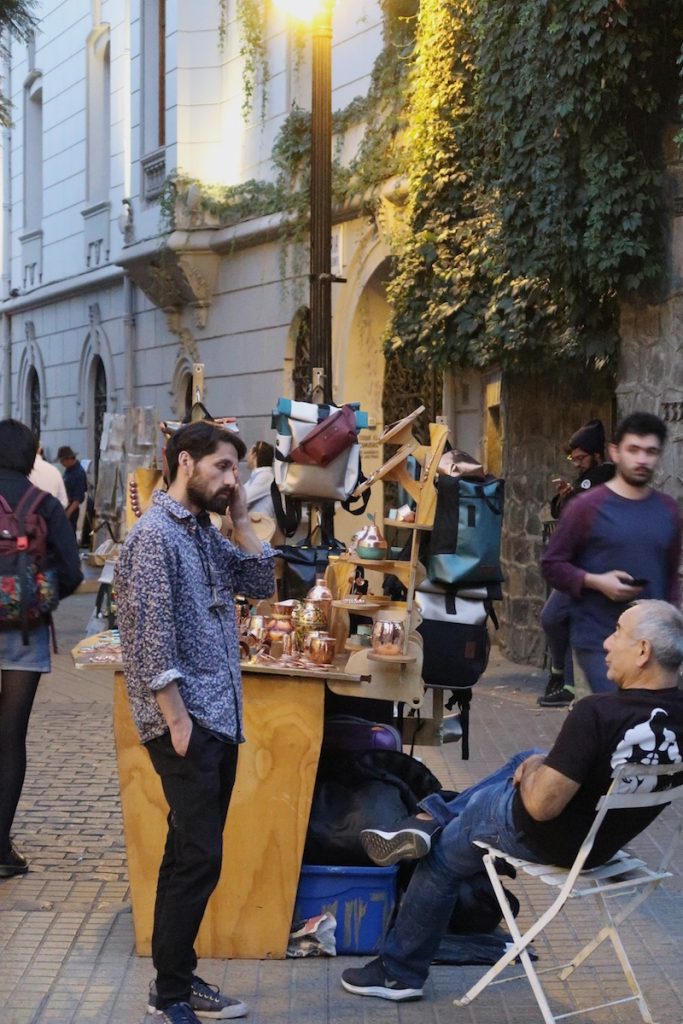
On one street corner the entire side of one building is painted using the trompe d’oeiul technique, with lifelike windows replete with people. Opposite, an ivy clad building next to a modern plaza housing a fine art museum. We wander as far as the nearest metro station which is itself surrounded by huge murals painted on the walls surrounding the entrance.
I haven’t mentioned the temperature. It was warm. For us anyway, I was in shorts and a t-shirt (obviously) and we were getting strange looks. All the locals were wearing padded jackets and overcoats. Lightweights.
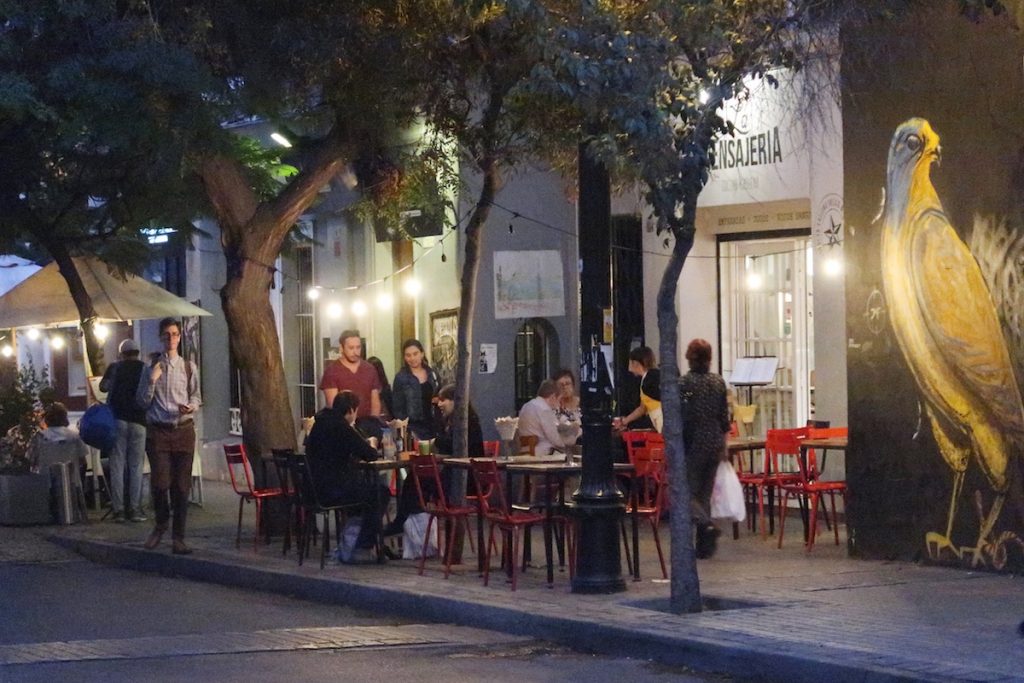
Woken by the alarm, I’m still not entirely whether it’s morning or evening, but we get up and head off out. As it was Sunday, my expectations were that it would be pretty quiet. A few places open, but not many people about.
Wrong. We emerged from the end of our street into a bustling street full of bars and restaurants, tables spilling out across the pavement. As it was evening, lights were twinkling all about, in windows, on tables, in the trees along the pavement. And people. Everywhere. Further along the street is a small street market. A few people selling jewellery, clothes, paintings and general bric-a-brac.
On one corner are two guys dancing to a salsa beat. They are definitely gay, and not the last gay couple we’d see over the next few days. But dance they could, and they drew a small crowd to the street corner where they were performing.
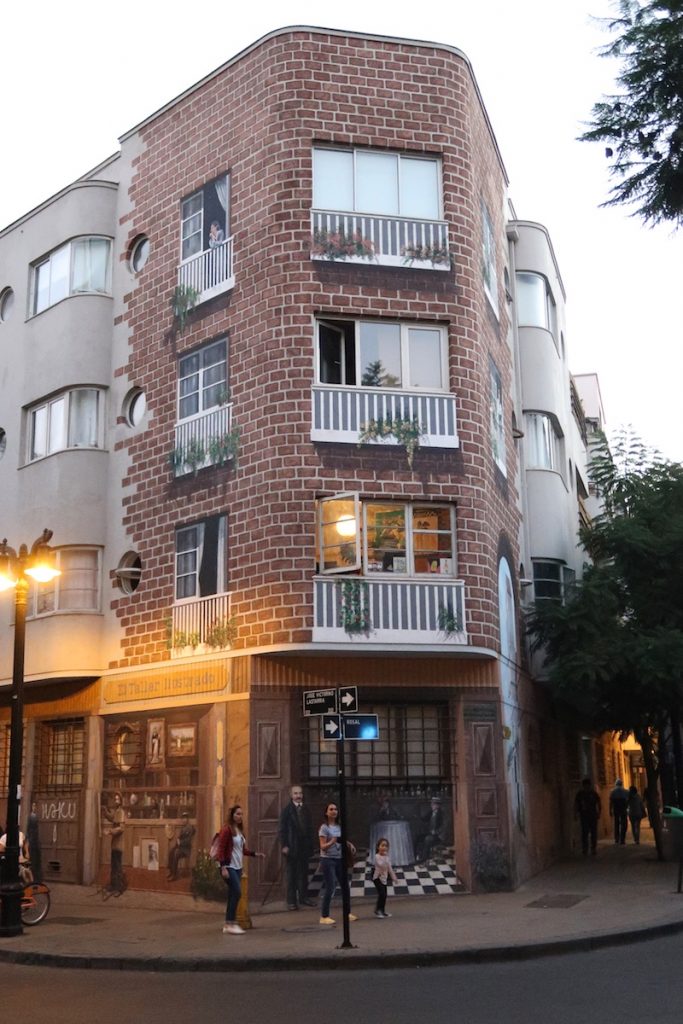
So back on the busy street near our hostel we pick one of the many restaurants to get some food. Sitting in a street café, ordering risotto, and listening to people speaking Spanish all about us make it all feel very European. We could have been in many a town or city across the Southern Mediterranean.
Near to our hostel is one of the ‘must visit’ parks, the Cerro Santa Lucia. Cerro in Spanish means mount, and this small park is really just a small green hill with a Castillo, a church and a viewing point on a rocky outcrop. An oasis amongst the countless grey tower blocks that seem to fill the city. It was hot by the time we left to explore, and even though it was a short walk I was glad to reach the top. I’d hoped that we would be greeted by spectacular views across the city to the towering, snow capped, Andes in the distance. What we actually saw was smog.
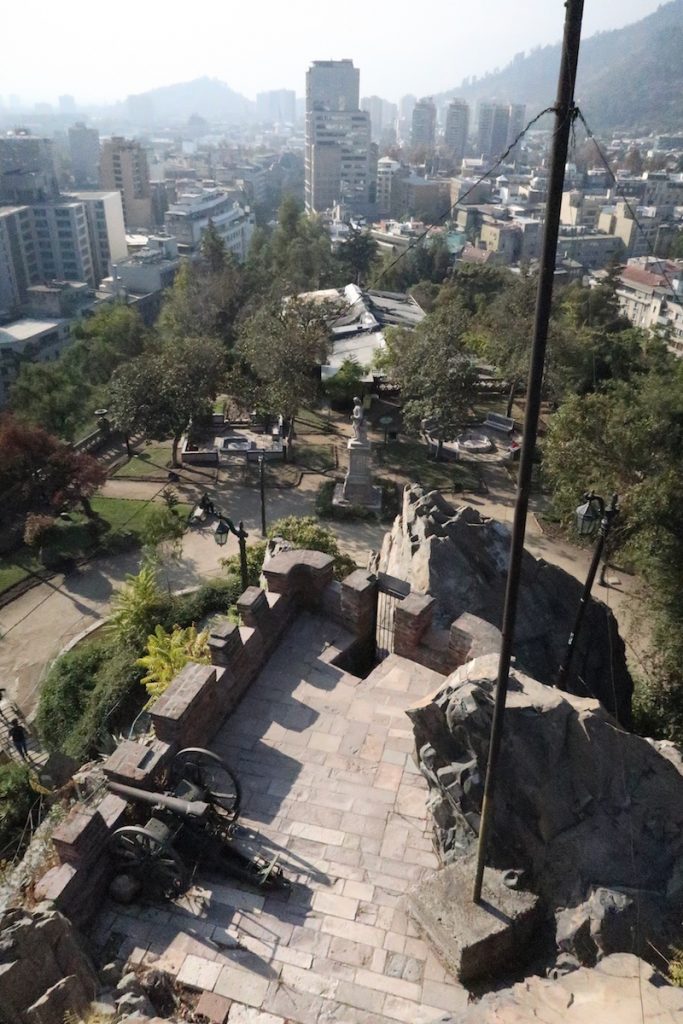
I guess it’s the fate of many cities these days, but car exhausts, offices and factories combine to create a cloud of haze that in this case sat over Santiago nestled in the valley between mountain ranges obscuring the views our toward the horizon. To be fair, you could see the mountains, and it was quite impressive still, but it wasn’t the picture postcard view we’d hoped for.
Wanting to get a better understanding of the city and it’s history, and to see some of the highlights, we decided to join a walking tour. It’s run by a company called Tours4Tips, and as the name suggests, you don’t pay for the tour, you just tip the guides what you think the tour has been worth (they do suggest a range to help you though… ?). They wear red and white hooped, ‘Where’s Wally’, t-shirts that are surprisingly easy to spot in a crowd (that being the entire point…). So we met our guide, Carlos, resplendent in his red and white, outside the Museum of Fine Arts just a few minutes walk away and set off.
The tour took us across the centre of Santiago, and covered a bit of the history of street art here, the main square, the presidential palace, the metro and finally some tips for places to eat and drink.
First stop, the metro station (Bella Artes) that we’d walked to on our first evening. It turns out that the murals adorning the walls are actually by a couple of renowned street artists. Their work has a very individual look, and instances can be found across the city. As I said there is street art everywhere (or graffiti), but not only on the walls. In some places the roads and pavements have been painted too. Apparently this happens on some pedestrianised areas, just to make the paths nicer for people to look at.
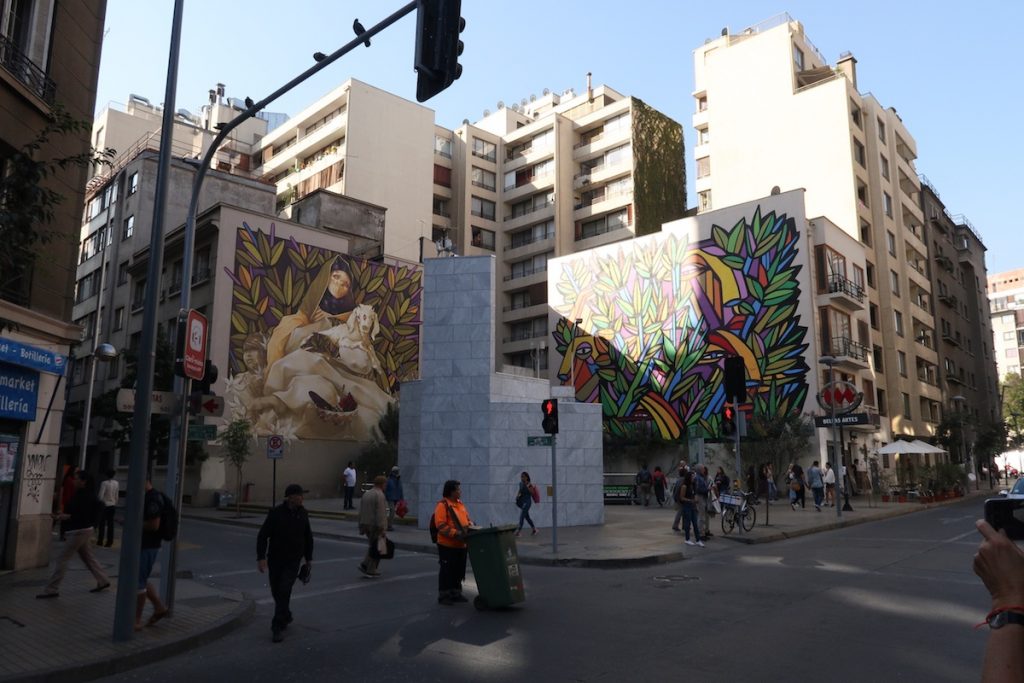
On to the Plaza de Armas. The huge central plaza in Santiago. Bustling with people, men playing chess in one corner, upmarket cafes along one side, the cathedral opposite and on another side a row of cheap fast food stalls selling completos. Completos are really just giant hot dogs covered with, well, pretty much anything. Hence the name. Apparently the current vogue is to cover them with tomatoes, onion and cheese. A bit like a ‘completos parmie’ (for the Aussies out there)…
Whilst the square seemed pretty safe, it is still a hot spot for pickpockets, particularly at night. The authorities have an interesting way of combatting this. They have tried to smarten the square up and attract people there. Safety in numbers I suppose, although the area is still very well policed. We actually saw police patrolling regularly everywhere we went, in twos and threes, all armed and sometimes mounted or cruising the streets on pushbikes.
We moved on from there to the presidential palace, the Palacio de la Moneda, the site of the 1973 military coup and start of one of the bloodiest periods in Chile’s recent history. Carlos sat us down in the square to explain more about the period but more of that in the history lesson later.
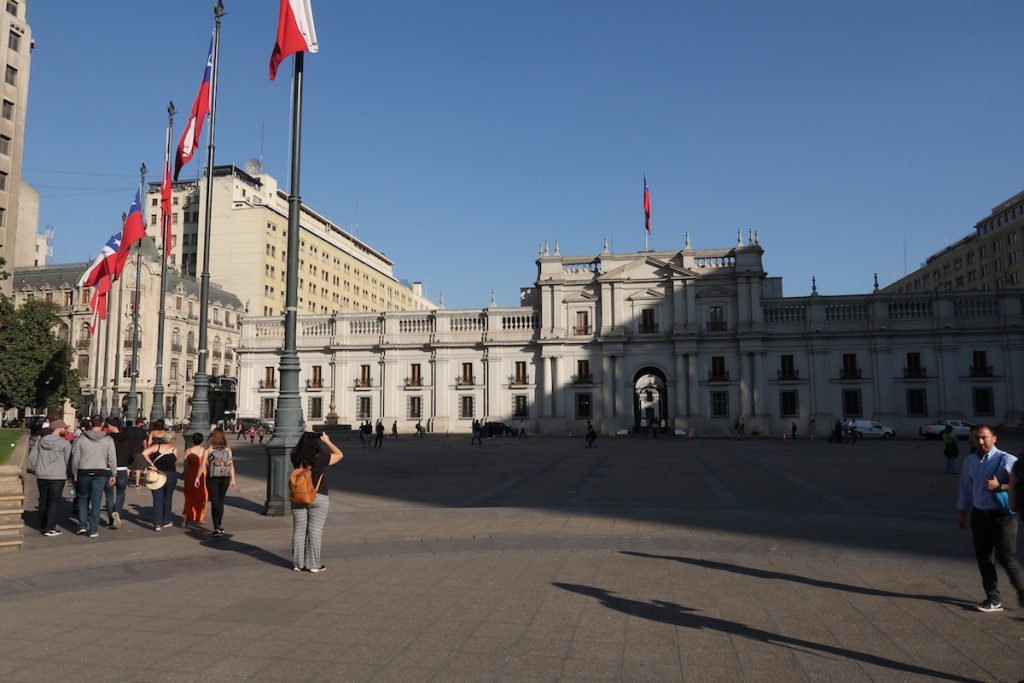

It is a centre for performing arts, and outside were dancers (generally male), jugglers, unicycle riders, all practicing and showing of not inconsiderable talents. Before we left, Carlos gave us some tips of places to eat and drink locally. They all turned out to be within two hundred metres of our hostel.
We watched the artistes with three of our fellow tour group members few a few minutes before deciding to join them at one of Carlos’s recommended drinking stops.
Carlos also introduced us to the metro. The station he took us to had large murals on the platforms, and the system itself is clean and efficient. We received the usual warnings about bags and pickpockets, but it didn’t seem to be any worse than in any large city and I’ve been on far more threatening metros in Europe. We emerged back in the Lastarria district, near the Centro Gabriela Mistral (GAM for short), a performing-arts centre named after the Chilean poet Gabriela Mistral, the first Latin American woman to win the Nobel Prize in Literature. Inside is a symbol of the people that survived the military dictatorship, brass door handles in the shape of clenched fists that were rescued from the palace.
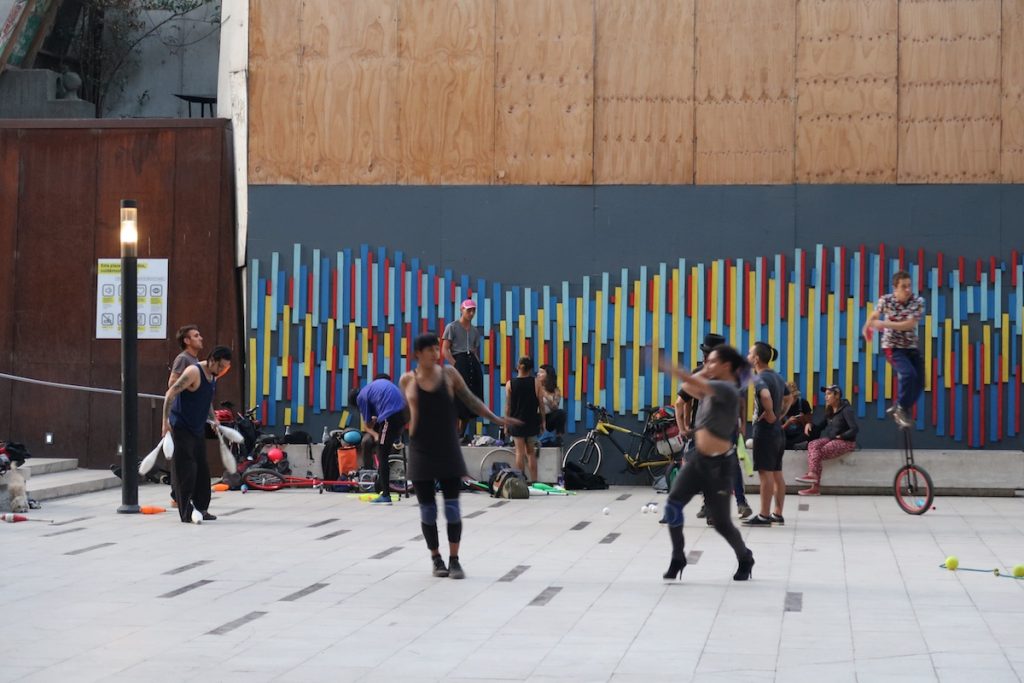
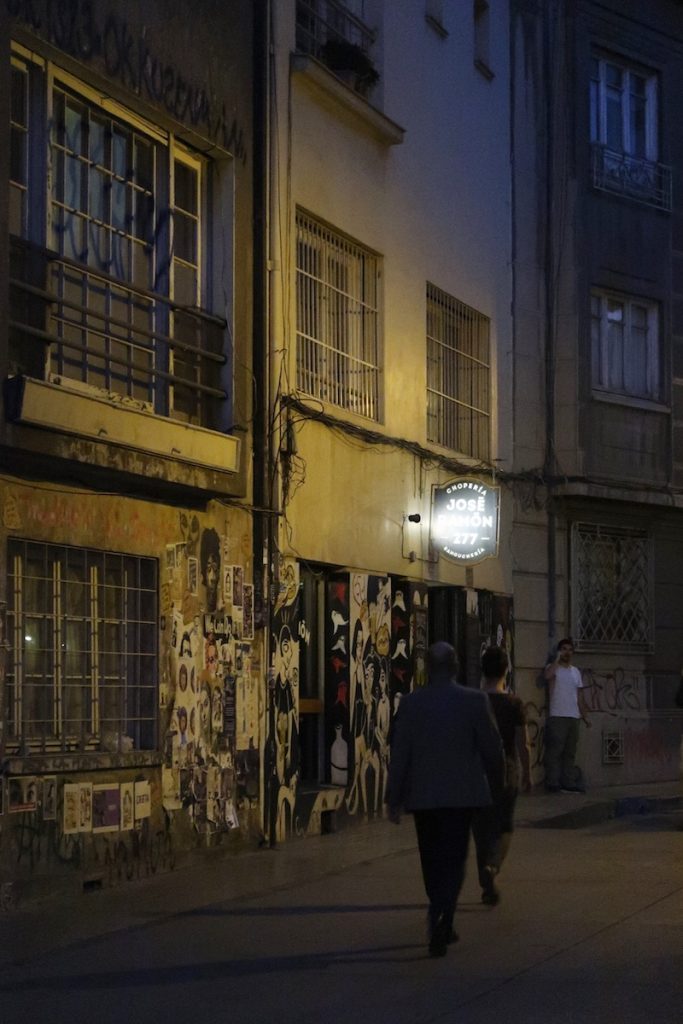
Now, I hadn’t really associated Chile with beer, but the brewing industry across Chile would appear to be flourishing.
This particular establishment, José Ramon, had a range of craft beers from lager and pale ale to stout and weiß beer. And very good they were. At other places that we ate and drank we had beer from as far apart as Belgium (Stella of course) and Patagonia. Chileans clearly like their beer.
As an aside, if anyone visits Santiago I would thoroughly recommend Tours4Tips. The guides are really knowledgable and happy to share their thoughts and to give advice. And for a few dollars each as a tip, really good value. In fact we enjoyed it so much we decided to go on the morning tour (covering different aspects of the city) the next day.
Except we overslept the next day. Catching up on sleep I suppose, so we changed our plans. On the tour, one of the people we learned a little bit about was a man named Pablo Neruda. Neruda is a world renowned Chilean poet and diplomat who lived in Santiago (but who also had houses in Valparaíso and Isla Negra). His house is open to the public so we decided to go and learn more about him and his life.
Neruda came to prominence as a poet at the early age of thirteen when he published his first poem in a local newspaper. He wrote many poems in many styles. His most famous work is a collection of love poems, “Twenty Love Poems and a Song of Despair” which has been translated into many languages.
During his life he fulfilled a number of diplomatic roles including posts abroad and as a senator in the Chilean Communist Party. He had to go into hiding and then exile in 1948 when communism was outlawed in Chile, but returned after being awarded the Nobel Prize in Literature in 1952 when he rejoined the communist movement and was recognised by Salvador Allende and asked to speak in front of 70,000 people.
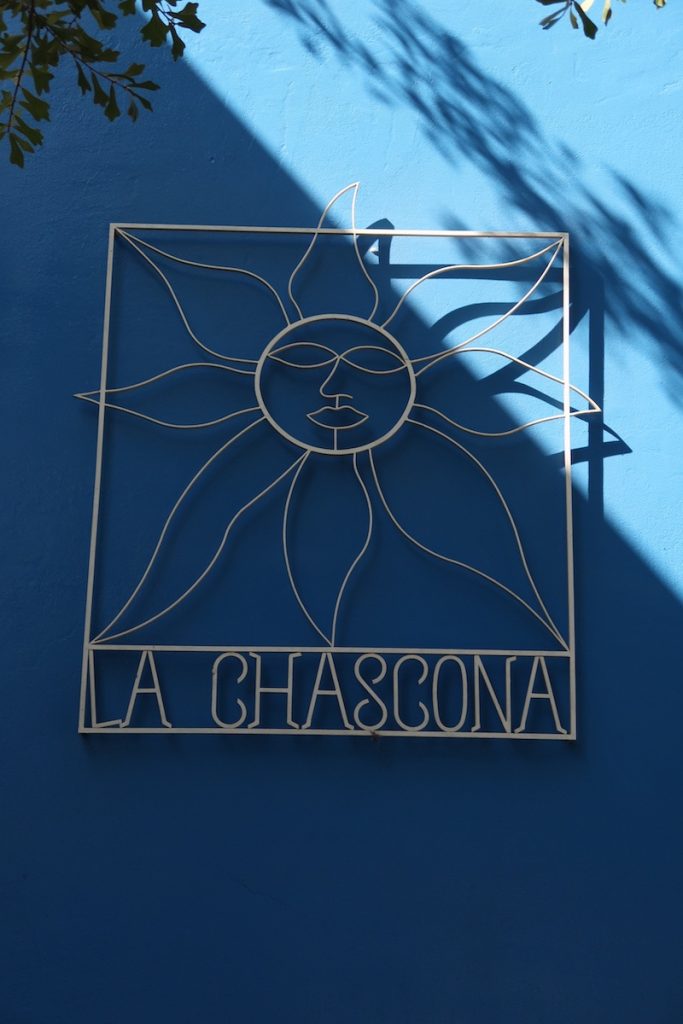
He was married three times in his life, the final time to Matilde Urrutia with whom he had conducted an affair during a previous marriage. During the affair he built his house in Santiago, La Chascona, for her to live in in secret. After their relationship became public and they eventually married they shared their time between this house and ones in Valparaíso and Isla Negra.
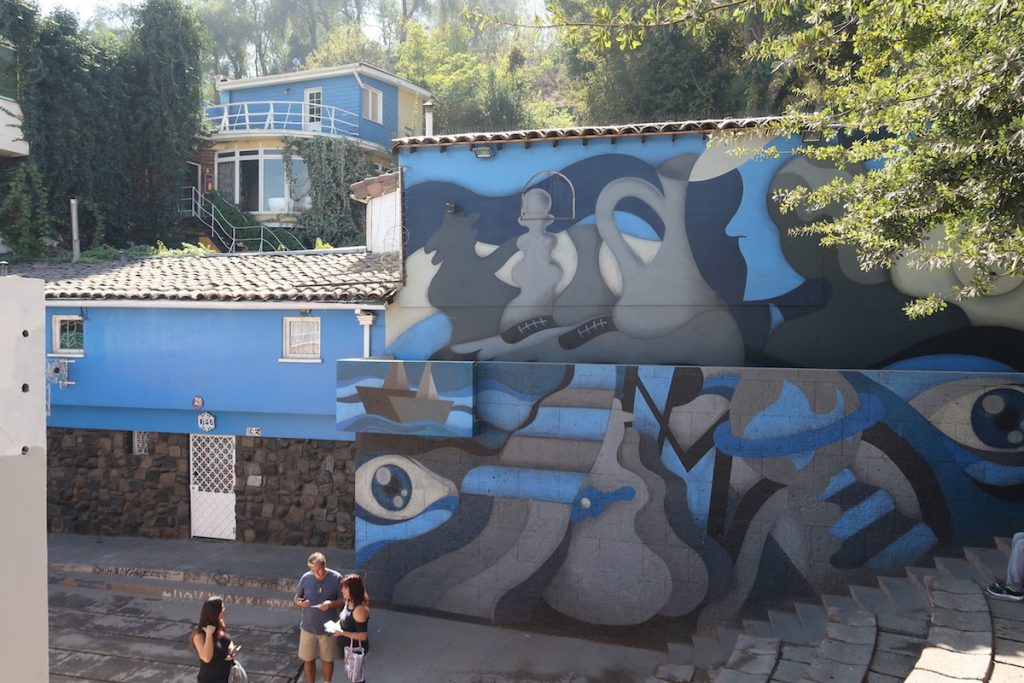
The house itself, built at the foot of the Cerro San Cristobal, at the time would have had stunning views of the Andes. Now that view is obscured by the teeming grey tenement blocks. It is an eclectic mix. Neruda saw himself as a ‘captain of the land’ and there are many maritime themes in the design and décor. It is also very seventies, with brightly coloured glassware, plastic chairs and Formica tables but all mixed in with French bistro tables from a Paris café, leather chairs and Indian pieces harking back to his diplomatic days.
We haven’t quite finished with Neruda yet, but I’ll come back to him later.
After seeing La Chascona, we took the funicular to the top of the Cerro San Cristobal. At 880m and rising 300m above the rest of Santiago, this houses the largest municipal park in South America and the fourth largest in the world, the Parque Metropolitano. At the top is a sanctuary dedicated to the Immaculate Conception on top of which sits a 22m statue of the Blessed Virgin Mary. An amphitheater just below is used regularly for services.
The top offers panoramic views around, only marred by the ever present smog and an unsightly collection of communications masts.It is surprisingly tranquil up here, and away from the sanctuary where there are scattered remains of a grand restaurant/casino and an observatory people are few and far between.
To get to Neruda’s house and Cerro San Cristobal we had to walk through an area called Barrio Bellavista. This was notable for it’s ‘street art’ and student bars, and when we descended from the mount the bars (now showing live Champions League football in almost every one) were calling us in for a beer. For some reason that we didn’t fathom, in some establishments they won’t serve alcohol without food which led to our first encounter with a dish called Chorillana. A sharing platter, it’s a large portion of French fries (I mean large) topped with pulled beef brisket and cheese. Healthy! But all the same very tasty. Washed down with more local beer, it all hit the spot and we still had a bit of a walk left to try to burn off a few of the calories.
Having slept late the previous day, we actually got up and made it to our second Tours4Tips tour. This time we set off first to visit a few of the markets, and see some more of the offbeat Santiago.
The markets are like many of the markets we’ve seen on our travels; busy, colourful, smelly at times and the place to go for good value food, either in its raw state or as street food.
The fish market was the noisiest, busiest and most smelly. We were the day before Easter Friday so the catholic masses were all in town buying their Friday fish. The others were less chaotic, and we ended up with our ‘Wally’ for the day, Max, buying us pumpkin bread. Deep fried, made of pumpkin and smothered with chilli salsa. It was hot, ask Helen…
A quick metro ride then took us to the cemetery. Not a usual stop for a tour I guess, but in this case certainly, pretty interesting.
The site is vast. Over 2,000,000 people are buried there. Santiago currently has a population of 8 million, so 2 million is a pretty significant number.
The cemetery itself is structured like a small city within a city. It has blocks and streets and roads, and I think it would be all too easy to get lost. I think it would be pretty spooky in there at night too. To fit all of these graves in, some of the graves are arranged above ground like mini blocks of flats, eight coffin height storeys high. Each of these plots can be purchased in perpetuity by the family or rented for a minimum of five years. At the end of the rental period, if the family don’t continue rental payments the bones are removed from the grave and put in a box in the back. The grave is then reused for a new occupant. In that way, graves can be used three or four times, and the names of all those contained within will appear on the facia.
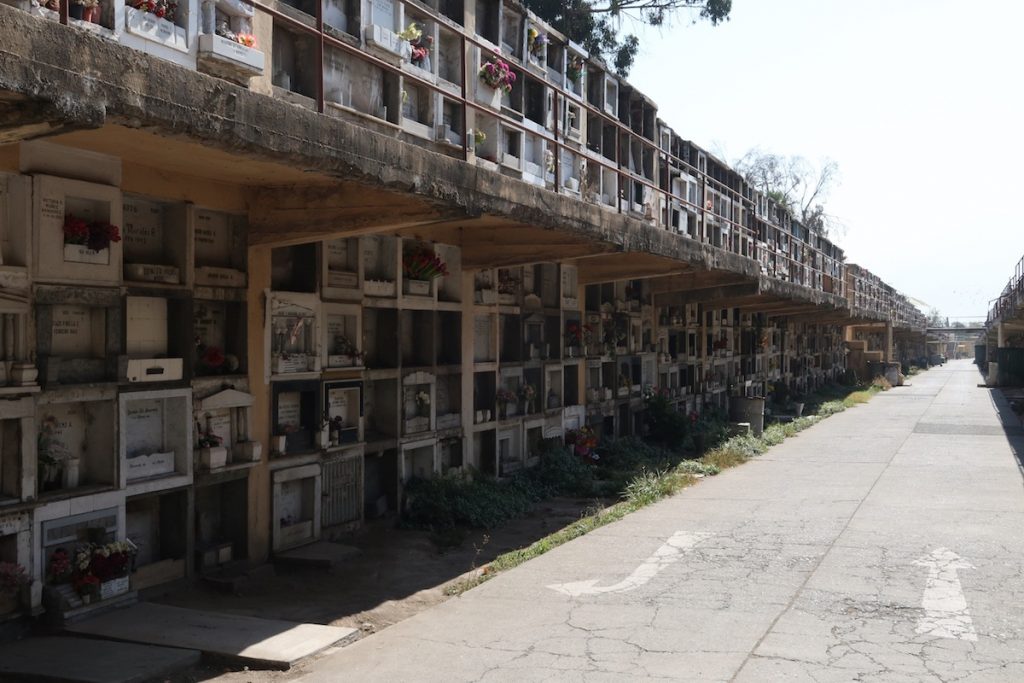
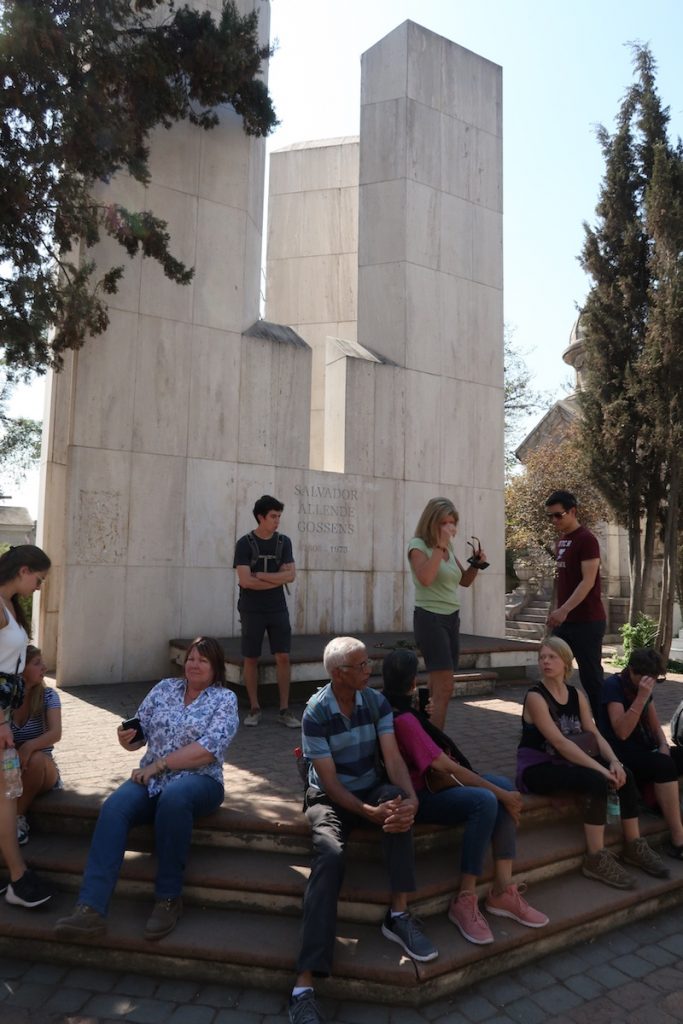
The cemetery is also the final resting place for presidents, generals and other high ranking figures. Our tour ended at the mausoleum and final resting place of Salvador Allende. This is where Max told us a bit more of the recent political history of Chile, so its about time for me to try to piece all of the bits together.
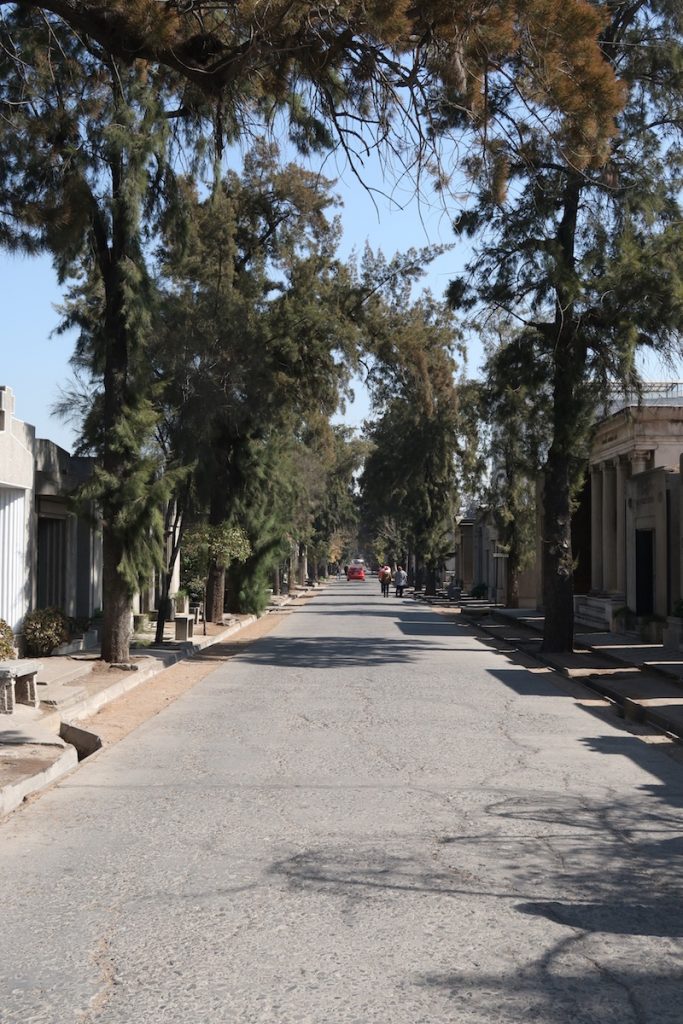
Other families purchase plots of land and build a family mausoleum. One stage further, and immigrant communities band together and build a huge mausoleum for just their communities. There are mausoleums for the Chinese immigrants, Spanish and Italians to name but few. The Italian mausoleum is like a tower block in its own right. An eight storey building with a ramped walkway around the inside spiralling up to the eighth floor. At the top, graves are still empty and the Italian community still bury their dead there today. For those not fortunate enough to be able to afford either a rented grave or mausoleum, a spot in a communal grave awaited them.
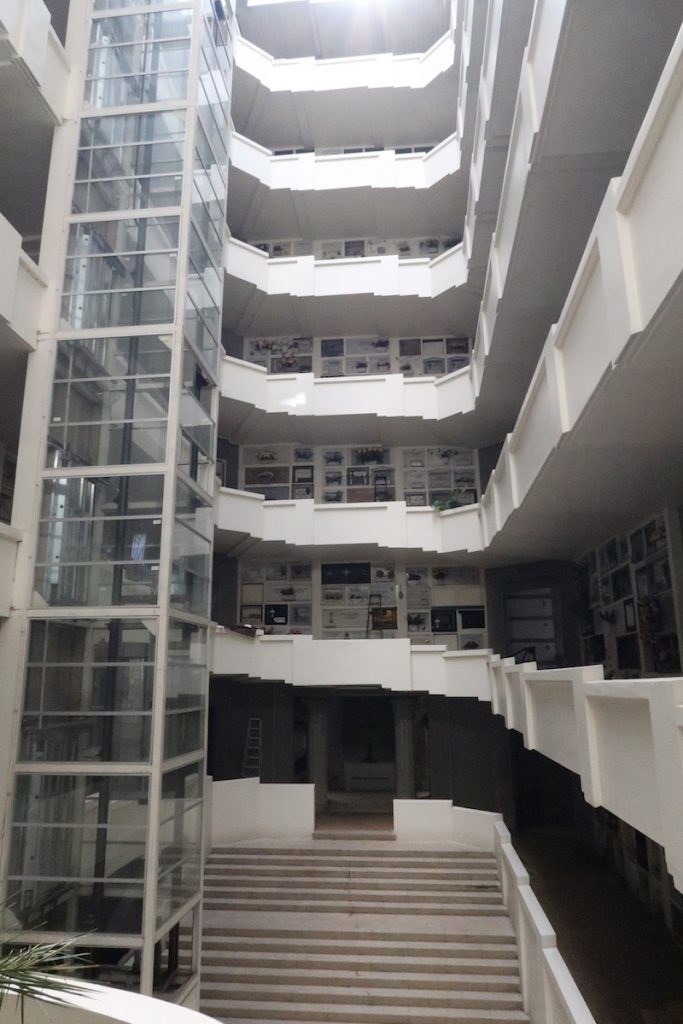
Allende’s political career spanned nearly forty years. As a committed member of the Socialist Party of Chile, he had run for president in three consecutive elections (52, 58 & 64) but failed to gain enough support to be elected. He stood for election again in 1970, and this time he won by a very small margin. However, he had only gained 36.2% (against 34.9% for his nearest rival) which meant that congress had to select between the two. Tradition has it the the candidate with the highest number of votes was selected, and eventually this is what happened.
Thus Salvador Allende became the first democratically elected Marxist president in Chilean history and in the world.
The first few months seemed to go well. Allende put in place socialist policies to nationalise industries, reduce the wage gap between blue and white collar workers and provide free goods and services to people.
However, his policies were not economically sound. Whilst wages went up, inflation raged. At one point consumer goods went up by 120% in one month. Exports went down, imports went up and the people started to become unhappy. Basic commodities disappeared from supermarkets creating a black market for basic goods, and finally a series of strikes, the first led by truck drivers damaged the economy still further and crippled the country. In addition to this, the United States were uncomfortable with the close ties between Allende and Fidel Castro, in fact they had put pressure on the Chilean elections to try to prevent Allende’s election in the first place.
A constitutional crisis ensued, and Allende had prepared a speech proposing a plebiscite (essentially a referendum) to ask the people if he should stand for re-election. This speech was scheduled for September 11th 1973. It was never delivered.
General Augusto Pinochet, the head of the military lead a brutal military coup d’état on September 11th. Allende made a final radio broadcast to the nation from the presidential palace before the Chilean Air Force bombed it dropping 23 bombs. When the military entered the palace later that day, they found Allende’s body. He had apparently shot himself with an AK47 (although his suicide has been hotly disputed). After Pinochet had seized power the military rounded up thousands of left wing supporters. Many were herder into the National Stadium of Santiago where they were beaten, tortured and even executed. Thousands of Allende supporters died in the aftermath and tens of thousands were driven into exile.
Allende’s body was taken away and buried in secret with none of the honours a president would normally receive. Only his family knew of the location.
Back to Pablo Neruda. On September 11th, he was in hospital having been diagnosed with prostate cancer. He was convinced that he was being poisoned in hospital and so a few days later left to go home to his Isla Negra house of his own accord. He died a few hours later, officially due to heart failure, but a much later postmortem concluded that this was extremely unlikely to have been the cause and that he could have been murdered. Despite La Chascona being ransacked by Pinochet supporters, his wife Matilde returned there that evening to hold a wake amongst the broken glass and to stay.
When he was buried, Neruda’s coffin was followed through the street by a crowd in defiance of Pinochet’s orders. It was the first act of defiance against the dictatorship.
In the years that followed Matilde committed to restoring the La Chascona to its former state which she did, and continued to live there. When she died, she was buried along with Neruda (who’s body was moved) at their former home in Isla Negra.
Pinochet had changed the constitution in 1980 so that he would remain president until 1989. Over the sixteen years that followed the coup, dissidents and anyone questioning the military junta were hunted down. Many were tortured and imprisoned but many just disappeared, with bodies being tied to pieces of rail track and dumped in the ocean. Others were shot in the street in cold blood.
Pinochet called another plebiscite in 1988 to determine if he should be given another eight years in power. This time the country voted against him despite his best efforts to rig the vote and annul the results. This bloody period in Chile’s history ended with a peaceful democratic election which ended up with the opposition candidate Patricio Aylwin winning by taking 55% of the vote.
Finally the people of Chile celebrated freedom from this military dictatorship.
There is a museum in Santiago, The Museum of Memory and Human Rights, that remembers the victims of this time. We visited it a few days later, and aside from telling the stories of some of those who suffered and died during this period, it also serves as a stark reminder of how recent some of these events are. Also recognising a square you were standing in maybe a few hours earlier being bombed and destroyed in TV news footage makes it all seem both very real and very close.
Back to more cheery things…
Valparaíso was once the most important port in Chile. It was fought over by the British and the Spanish, and later it was an important stop for ships making the journey to the Western United States. However, the opening of the Panama Canal in 1914 and the massive (8.2) earthquake just off the coast in 1906 that destroyed much of Valparaíso largely ended its life as a port many years. Now it has been declared a UNESCO World Heritage Site (in 2003) and tourism has grown it has gained a new lease of life. Its importance as a port has grown again and it is now a thriving city once more. A number of people had told us what an amazing place it is to visit and that we shouldn’t miss it on our trip.
We left our bags in the Poker Hostal and jumped onto what turned out to be a very comfortable bus (reclining seats a la business class airline seats) and made the hour and a half journey to Valparaíso. When we arrived, I was surprised at just how big Valparaíso is. I expected a smallish harbour town, but what I found was a huge sprawling city spread over a number of steep hills and reaching around the coast to the next city on, Viña del Mare.
The bus station we arrived at was a hectic place. It was the day before Good Friday and according to the Lonely Planet hoards of people make their way to the coast for the weekend. It’s also not in the smartest part of town. One couple we’d met said they grabbed a taxi to the main part of tow, but we decided to catch the 802. The 802 line is the oldest working trolleybus line in the world and has been declared by the Chilean’s as a national monument. There are some curved busses still running that date back to 1947 no less.
We jumped off in the centre of town near the port, now modern and stacked with containers and massive cranes. The buildings themselves are quite grand, but also very faded and very grubby. A clean and a lick of paint certainly wouldn’t go amiss. Our accommodation was up on the hillside so we headed for one of the eight operational ascensors. These are essentially funiculars that take you up the steep hillsides to link the various hills of the city with the flat central part of town in front of the port. There were sixteen, but the others are now in need of repair as they have been damaged by one of the hundreds of earthquakes that hit Chile every year.
At the top the buildings are smaller, but many are made from corrugated iron and wood and close up they still exude a shabby appearance. But the thing that makes Valparaíso unique and famous is that all these houses are painted in different colours. Often vibrant shades, of every hue. And on top of that the street art. Everywhere you look artists have used the walls, doors, pavements, steps (of which there are thousands around the city) as their canvas. There are different styles; cartoon, political, ecological, everything.
Pictures are the only way to show exactly what it’s like there, but unfortunately when we were there it was mainly cloudy so I don’t think we saw it at its best.
The Lonely Planet recommended a little café for lunch. The best value in town it said. So what could we do? Three courses for 6,500 Chilean Pesos, about £8.00. And they were right. And it included a drink that we would have paid £2.50 for on its own elsewhere. After lunch we joined another Tours4Tips walking tour. The tour started in Plaza Sotomayor, the main square, dominated by the pale blue naval command building and easily the most impressive building around. Much of the interesting places and art we saw on the walk, but Leonardo, our guide also pointed out the many European influences about; a Lutheran Church, an Anglican Church, a Yugoslav house etc. Apparently the English and the Germans, oddly, have had the biggest influence on the area, and this is still reflected in the street names.
As usual they gave some tips for places to eat and drink, which is how we found ourselves later that evening in a jazz bar, very swish and trendy looking, completely at odds with the ramshackle buildings and streets outside. Fortunately the ascensors were still running as we had to head uphill to our bed, otherwise it would have been a steep and long walk home.
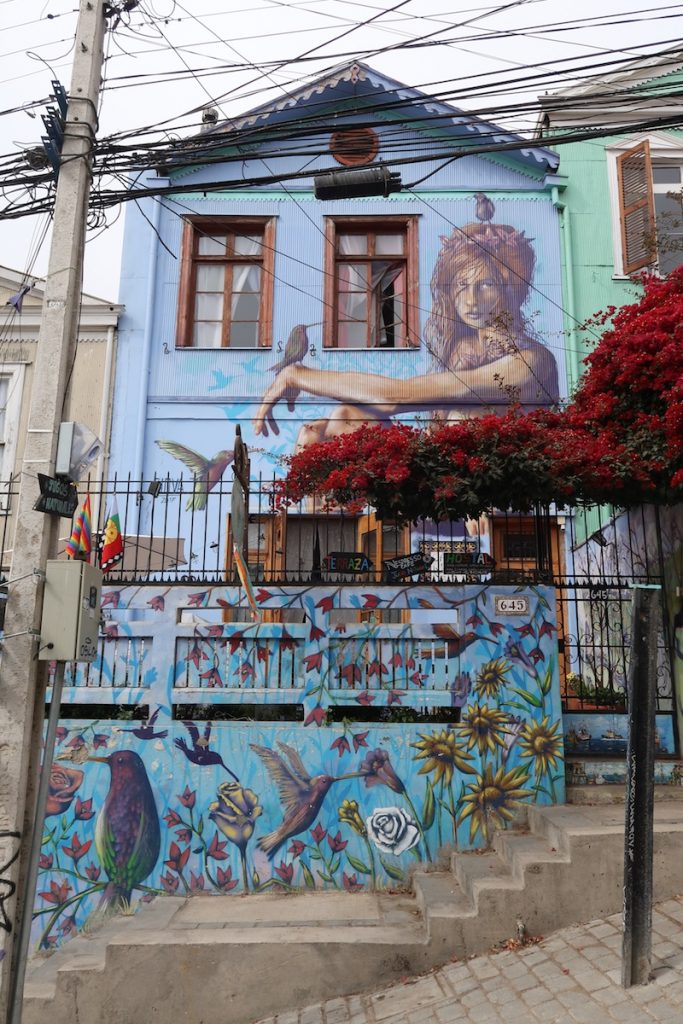
I haven’t really mentioned our hostel yet, but like many of the others around it is completely covered in a huge mural. Spotlessly clean and comfortable, and serving a very tasty breakfast it was a nice break from the city for a night.
The next morning we continued to explore on our own and headed for the Parque Cultural de Valparaíso, and arts centre created from the bones of the old prison. I think it’s a good example of something typical of Valparaíso and maybe Santiago as well. A really good idea that someone has turned into reality, but that has been left to fend for itself and fade.
Some murals around the walls seemed a little dull compared to those outside and a fruit and vegetable garden now overgrown but still wafting the scents of herbs and flowers. It’s saving grace for me was the little exhibition in their centre, dedicated to Gaudi, it was an interesting aside and threw up a fact that would make a great pub quiz question. Apparently the only place outside of Spain to have a Gaudi designed building is in Rancagua, south of Santiago, which is home to the Chapel of Our Lady of the Angels Church.
Eventually after fresh, deep fried, empanadas for lunch (the shop offers eighty varieties!) we headed back to the hostel to pick up our bags the sun came out. And everywhere looked so much better in the sun. As we walked back we passed a DJ with twin decks in the street, and the sun seemed to bring out the people as more and more filled the narrow streets and stairways.
What did I think of Valparaíso? It’s certainly an interesting place. Some of the art is really good, and clearly produced by talented artists. But it’s all very faded and ramshackle. As you look down from the many viewpoints you see derelict buildings, makeshift dwellings and many places in need of some tlc. It’s definitely worth seeing though, and on a sunny day would be pretty spectacular.
So we headed back down the hill to catch the 802. Which doesn’t run on Sundays it seems. So with the help of a couple of locals we get on a bus, and with the help of a kindly lady and the driver of the bus we hop off just in time to catch our bus back to Santiago.
Our last Couple of days were spent visiting a couple of the recommended museums and making our final preparations for our trip to La Paz. The Museum of Memory and Human Rights I’ve already mentioned earlier, but the walk there was interesting. It’s further away from the centre, about forty five minutes walk, and as you get further from the main square the area seems a little more run down and a Bit rougher. There are iron gates about, bars on windows and barbed wire. We didn’t feel threatened in any way, but I’m not sure I’d wander around at night for fun.
The other place we visited was Museo Chileno de Arte Precolombino, a space bringing together pre Columbian art from all over Central and South America. There are many (admittedly beautiful) pots, but you can have too many pots! But also artefacts used by shaman, giant statues and totems, timelines for the different civilisations across history and a section on the Mapuche, one of the indigenous tribes of Chile and one that has survived not only the Spanish invasion but also the influence of the twentieth and twenty first centuries. In southern Chile, the Mapuche people first really settled from a nomadic existence about one thousand years ago. They settled in great numbers, and when the Spanish conquerors started to move further south they were successfully repelled by the Mapuche. Even today large numbers of Mapuche still live very traditional lives and follow their old customs.
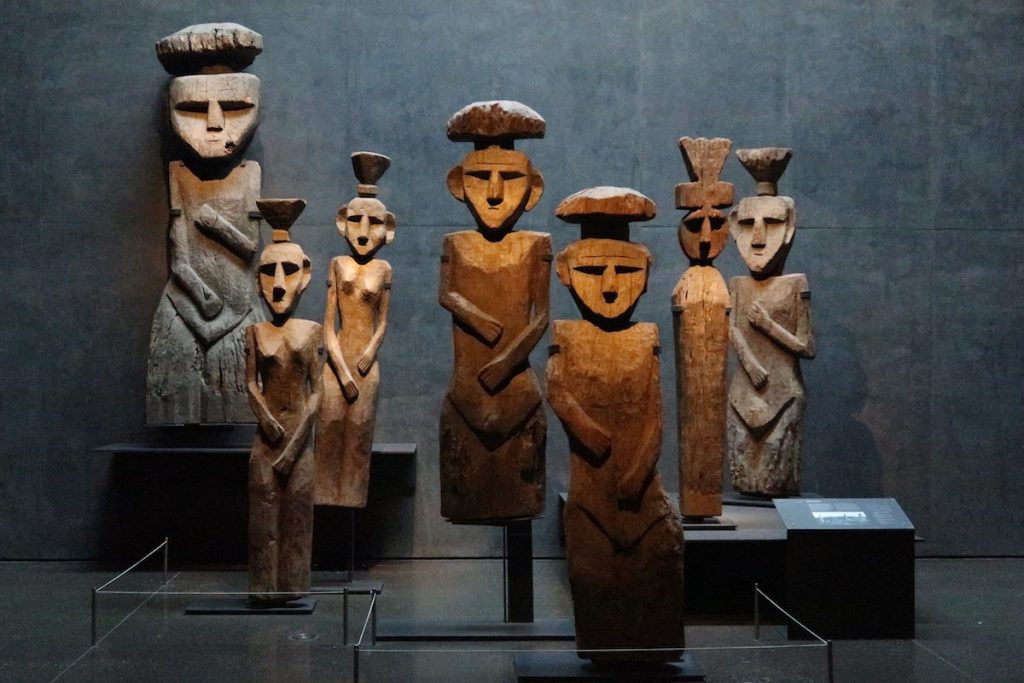
Overall I found Santiago a very European place. Other people I’ve spoken to say they think it’s more like an American city. Either way it’s worth a visit. It’s neither European nor American, and it definitely has its own character.
Walking home one night we happened across an assortment of people circling an open space on the pavement. A singer at one side was belting out some salsa music, and the locals gathered around, dropped their shopping bags to dance in the street for a few minutes. There was a fair mixture of people but they all seemed to be having fun!
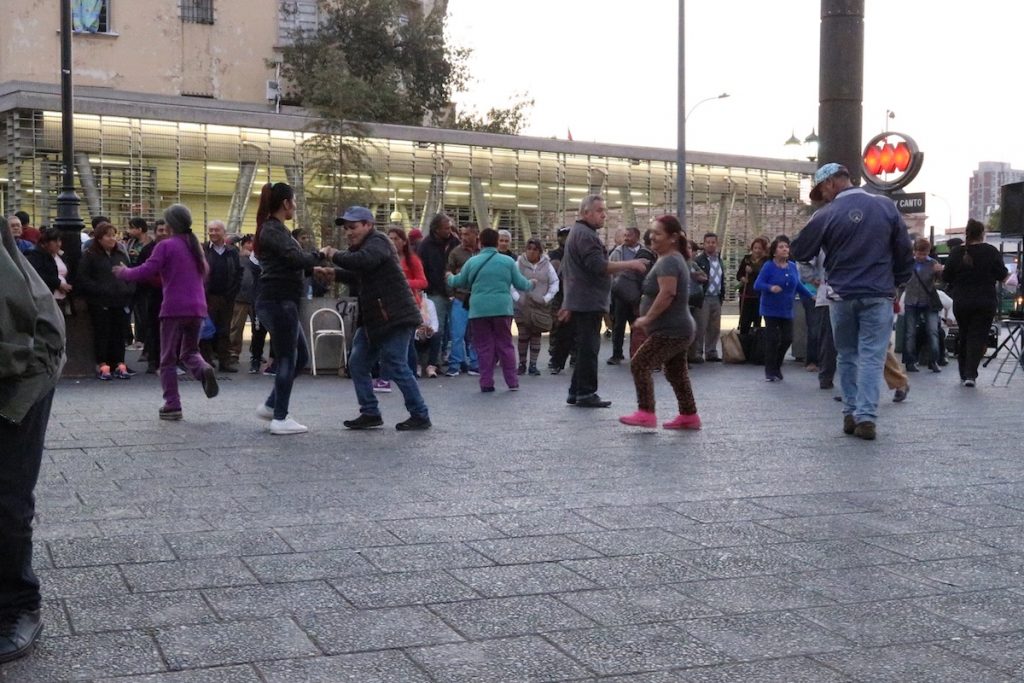
We didn’t really see Chile though, it’s a huge country (if not the longest country in the world, certainly one of them) and a few nights was never enough for that. It is somewhere I’d come back to though (actually we will briefly visit the north as part of our Intrepid trip across South America) as there is a great deal more to see.
